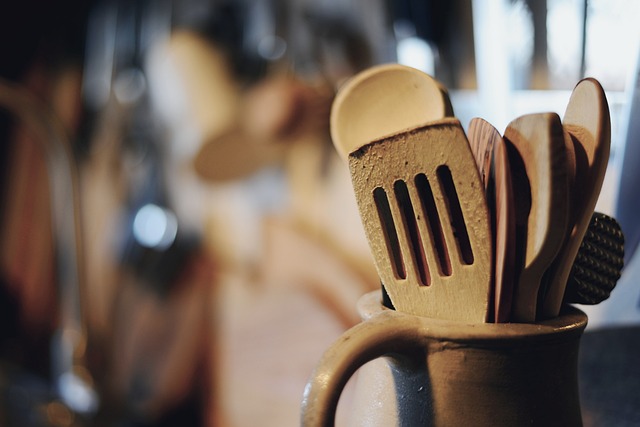Remodeling your kitchen with accessibility in mind is crucial for creating inclusive spaces. By integrating adaptive features like pull-out shelves and adhering to ADA guidelines, you can transform your kitchen into a barrier-free environment suitable for all. These upgrades enhance functionality, promote ease of use, and ensure comfort for individuals with disabilities or limited mobility, including wheelchair users. Prioritizing smooth operation, ample clearances, and strategic appliance placement results in an ergonomic and user-friendly space that accommodates diverse needs, revolutionizing kitchen design for inclusivity.
Looking to transform your kitchen into a more accessible and user-friendly space? Installing pull-out shelves and drawers is an excellent way to enhance functionality without compromising style. This article guides you through the process of planning and executing an ADA-compliant kitchen renovation, focusing on barrier-free layout and adaptive features. From understanding the need for accessible kitchen design to selecting the right pull-out shelves and drawers, we cover all aspects to ensure a practical yet elegant kitchen upgrade suitable for everyone, including those with disabilities.
Understanding the Need for Accessible Kitchen Design
In today’s world, an accessible kitchen design is no longer just a consideration for those with disabilities—it’s a necessity. A well-designed kitchen that accommodates various physical abilities enhances overall functionality and comfort for everyone, regardless of age or mobility. This shift towards inclusive spaces is particularly significant when remodeling, as it can transform a once-obstacle-filled area into a smooth, barrier-free layout.
When planning a kitchen remodel with accessibility in mind, many homeowners turn to adaptive features like pull-out shelves and drawers. These simple yet ingenious additions can make a world of difference for individuals using wheelchairs or facing mobility challenges. By lowering storage and work surfaces to accessible heights, these ergonomic kitchen upgrades promote ease of use and independence. Moreover, adhering to guidelines set by the Americans with Disabilities Act (ADA) ensures that your kitchen renovation is not only functional but also legally compliant, fostering an environment where everyone can dance around the cooking area without barriers.
Planning Your ADA-Compliant Kitchen Renovation
When planning a kitchen remodel with an eye toward accessibility and inclusivity, it’s crucial to embrace ADA-compliant design principles. The Americans with Disabilities Act (ADA) sets standards for public spaces, including kitchens, to ensure ease of use for individuals with disabilities. An accessible kitchen design should incorporate a barrier-free layout, allowing for free movement, especially if you or someone in your household uses a wheelchair. Consider the placement of counters, sinks, and appliances to facilitate easy access without aids.
Adaptive kitchen features such as pull-out shelves and drawers are excellent ways to enhance accessibility. These ergonomic designs enable users to reach items stored within without straining or needing external assistance. When integrating these features, ensure they meet ADA guidelines for height and spacing, making the kitchen both functional and user-friendly for everyone, regardless of physical abilities.
Selecting Pull-Out Shelves and Drawers: Features for Every Need
When considering a kitchen remodel with a focus on accessibility and adaptability for individuals with disabilities or limited mobility, pull-out shelves and drawers offer a plethora of benefits. These features are not only practical but also contribute to a more inclusive and barrier-free kitchen design. From reaching high cabinets to enhancing functionality, pull-outs cater to various needs.
Selecting the right type is key. Modern options include adjustable shelves for customized storage, soft-close mechanisms ensuring quiet operation, and built-in organizers that maximize space. For wheelchair users, low-clearance pulls or drawers are ideal, adhering to ADA (Americans with Disabilities Act) compliance standards. These features not only facilitate easy access but also promote an ergonomic kitchen layout, making daily tasks more manageable for everyone.
Installation Tips for a Barrier-Free Kitchen Layout
When installing pull-out shelves and drawers to create a barrier-free kitchen layout, consider the following tips for an accessible kitchen design. First, ensure that all cabinets and drawers open with minimal effort to accommodate users with disabilities or limited mobility. Adaptive kitchen features like soft-close hardware can make opening and closing smoother, providing comfort and ease of use.
For an ADA-compliant kitchen renovation, pay close attention to clearances. Countertop spaces should allow for at least 32 inches of clearance around each pull-out shelf or drawer to accommodate wheelchairs. Additionally, integrate ergonomic principles by positioning these storage solutions at a comfortable height, reducing the need for users to bend or stretch excessively. Incorporating these elements during a kitchen remodel for accessibility can enhance functionality and create a more inclusive space.
Adaptive Kitchen Solutions: Enhancing Functionality for Disabilities
In today’s world, inclusive and accessible design is a priority, extending beyond just public spaces to our own homes, particularly in kitchens. A kitchen remodel for accessibility can significantly enhance functionality for individuals with disabilities. Adaptive kitchen solutions come in various forms, from pull-out shelves and drawers that provide easy reach for those with limited mobility to ergonomic features like height-adjustable countertops and built-in assistive devices.
When considering an ADA-compliant kitchen renovation, the goal is to create a barrier-free kitchen layout designed to accommodate wheelchair users and individuals with visual, physical, or cognitive impairments. This might involve strategic placement of appliances, smooth, flat surfaces for easy cleaning and navigation, and added features like pull-down faucets and built-in lighting to improve accessibility. A well-designed accessible kitchen not only makes daily tasks more manageable but also promotes independence and improves the overall quality of life for those with disabilities.
When remolding your kitchen for enhanced accessibility and to cater to diverse needs, installing pull-out shelves and drawers is a practical and efficient solution. These features allow for easy reach, promote independence, and contribute to a more inclusive and functional barrier-free kitchen layout. By integrating ADA-compliant design elements like these, you’re not just improving the lives of individuals with disabilities; you’re also enhancing overall kitchen functionality and creating a vibrant, adaptable space that caters to all.
